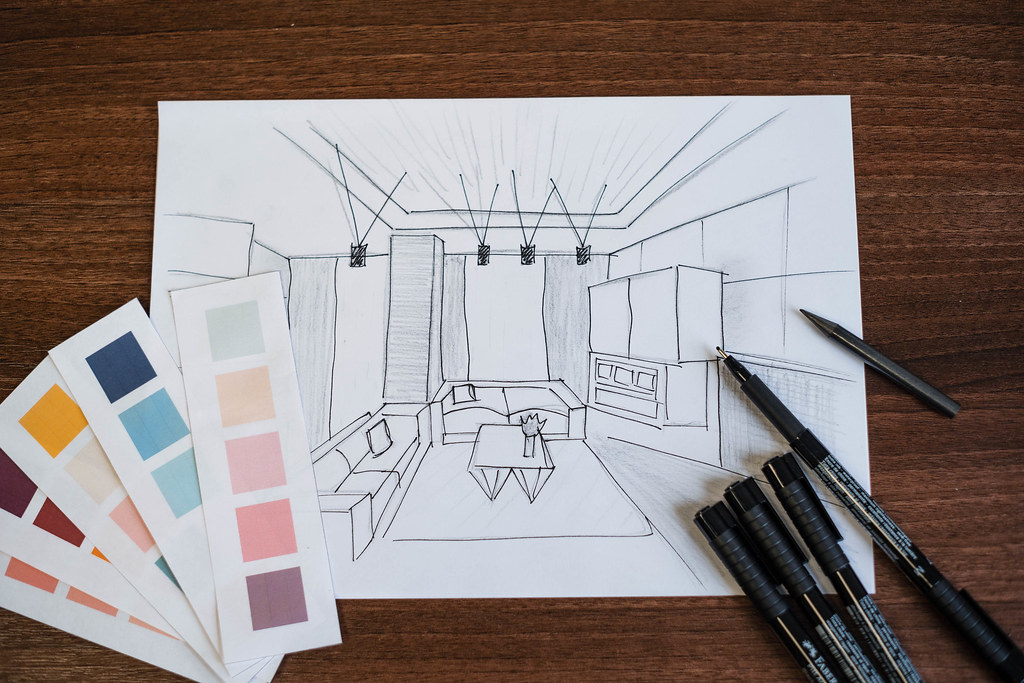The Art of Home Design: Combining Aesthetic Appeal with Lasting Durability in Renovations
January 7, 2025Home design is an intricate balance of style, functionality, and longevity, especially when it comes to renovations. As homeowners seek to enhance the beauty and utility of their living spaces, achieving the perfect blend of aesthetic appeal and lasting durability becomes a critical goal. A well-designed home is not only visually captivating but also built to withstand the test of time, ensuring that the materials and features chosen can endure daily use, environmental factors, and evolving trends.

The Principles of Home Design: Balancing Aesthetics and Durability
Introduction:
In home renovations, the ultimate goal is to create a space that is visually appealing, functional, and long-lasting. The challenge for homeowners and designers is to blend aesthetic appeal with durability, ensuring that renovations stand the test of time while enhancing the home’s visual appeal. This article will explore the key principles of home design that contribute to a beautiful and enduring renovation.
1. Understanding Aesthetic Appeal in Home Design
Aesthetic appeal refers to the visual attractiveness of a space, encompassing colors, materials, textures, and overall design. A home renovation that is aesthetically pleasing should also reflect the personality and style of the homeowners while maintaining harmony between various design elements.
- Design Styles:
Different home design styles, such as modern, traditional, minimalist, or rustic, all offer unique visual experiences. Understanding which style resonates with the homeowner is the first step in creating a design that is both beautiful and functional. For instance, modern designs might focus on clean lines and neutral colors, while rustic designs use natural materials like wood and stone. - Color Theory:
Color significantly impacts a room’s mood. Warm tones (like red, orange, and yellow) create a cozy, inviting atmosphere, while cooler tones (blue, green, and purple) evoke calmness. When designing for durability, choosing neutral tones or timeless colors for the larger elements of a home (walls, cabinetry) ensures longevity and flexibility. - Layout and Flow:
A beautiful home is also a livable one. The layout of a home should allow for efficient movement and connectivity between spaces. An open-plan layout may appeal to modern sensibilities, while traditional designs may focus on distinct, functional rooms. Achieving a balance between aesthetics and practicality is key in creating both beauty and durability.
2. Durability in Home Renovations: The Role of Materials and Craftsmanship
When it comes to durability, the materials and the craftsmanship used in a renovation are paramount. Durable materials not only ensure longevity but also minimize maintenance, saving homeowners time and money in the long run.
- Timeless Materials for Durability:
The choice of materials directly affects the lifespan of a renovation. Natural materials such as stone, brick, hardwood, and metal are proven to last for decades, if not centuries. Materials like ceramic tiles, porcelain, and granite countertops have both visual appeal and robust durability. In contrast, cheaper, synthetic materials may look appealing at first but may require replacement or repair sooner. - The Importance of Skilled Craftsmanship:
Durable renovations are only possible when executed by experienced craftsmen. Whether it’s laying a floor, installing cabinetry, or creating structural additions, the quality of work determines how well the materials will hold up over time. For example, poor installation of hardwood floors can lead to warping or cracking, undermining the material’s durability. - Environmental Factors:
Climate plays a significant role in determining the types of materials and construction methods best suited for a home. Homes in humid or coastal areas might need mold-resistant materials or weatherproofing, while homes in colder regions should prioritize insulation and materials that withstand freezing temperatures.
3. Achieving the Perfect Balance: Design That’s Beautiful and Built to Last
Achieving the perfect balance between aesthetic appeal and durability requires thoughtful planning and design. Here are key strategies that help combine both elements effectively:
- Mixing Timeless Design with Modern Trends:
Combining classic elements with modern design trends can create a space that remains relevant for years to come. For example, pairing traditional hardwood floors with contemporary stainless steel appliances or integrating reclaimed wood into modern open shelving designs can bring together the best of both worlds. - Material Selection for Long-Term Appeal:
A key strategy is choosing materials that look great today and will continue to enhance the home’s appeal over time. Using quartz countertops instead of marble, which is more prone to staining, or fiberglass windows that are both energy-efficient and visually appealing, ensures that the home retains its beauty and functionality. - Working with Skilled Designers and Contractors:
Collaboration between skilled designers and contractors is essential. Designers bring the vision of the space to life, while contractors ensure that those designs are executed in a way that maximizes both beauty and durability. Good communication between these professionals helps maintain the balance between aesthetics and longevity.
Conclusion: The Future of Beautiful, Durable Home Renovations
In conclusion, creating home renovations that are both beautiful and durable is an achievable goal when homeowners focus on the principles of design and select the right materials and craftsmanship. By combining aesthetic appeal with lasting durability, homeowners can enjoy their spaces for years to come while avoiding costly repairs and replacements. The key to successful renovations lies in selecting timeless materials, working with experienced professionals, and embracing a design philosophy that values both form and function.
